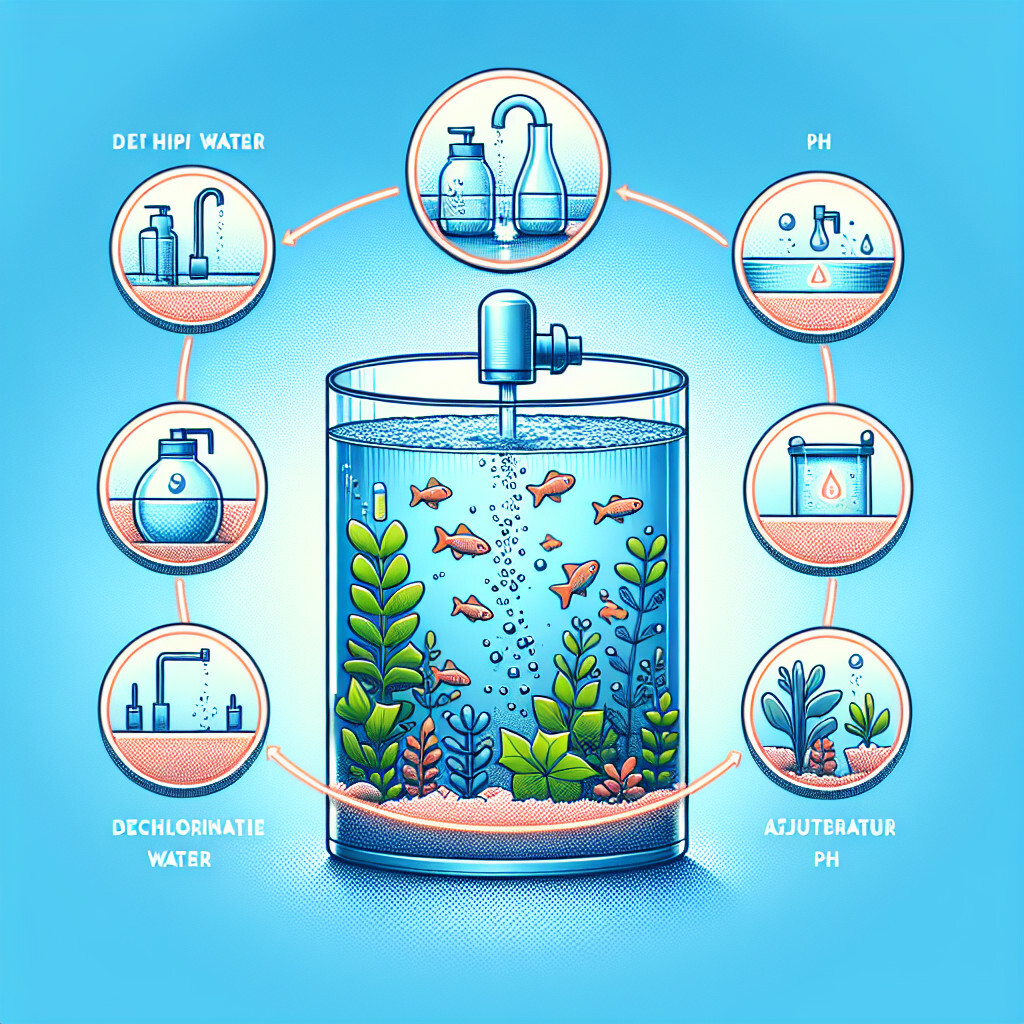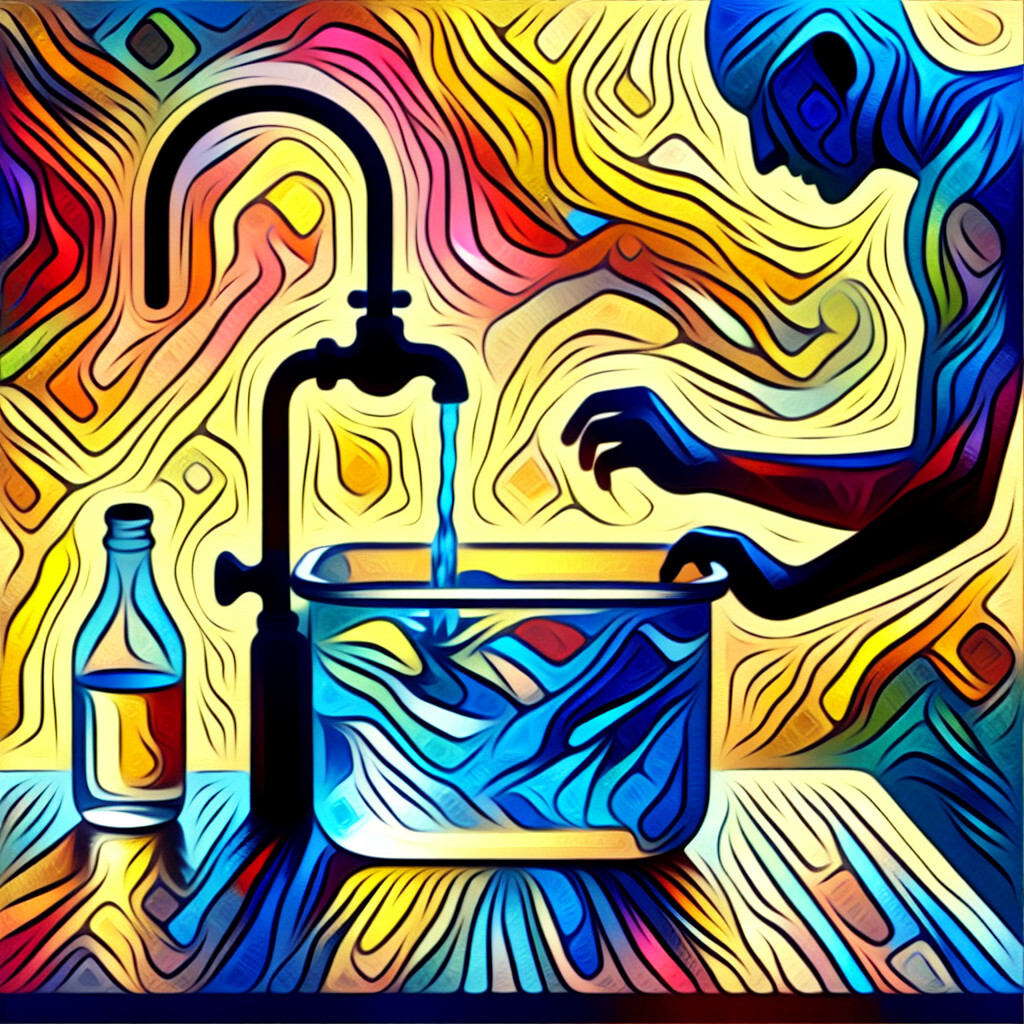-
Table of Contents
“Transforming Tap Water into a Safe Haven for Your Aquatic Friends!”
Introduction

Preparing tap water for a fish tank is a crucial process that ensures the health and survival of the fish. This involves removing harmful chemicals, adjusting the temperature, and balancing the pH levels to create a suitable environment for the fish. The process begins with treating the tap water with a water conditioner to neutralize chlorine, chloramines, and heavy metals that are harmful to fish. Then, the water is heated or cooled to match the temperature of the existing tank water. Lastly, the pH level is adjusted to meet the specific needs of the fish species in the tank. This introduction will guide you through the steps to properly prepare tap water for a fish tank.
Understanding the Importance of Dechlorinating Tap Water for Your Fish Tank
Understanding the importance of dechlorinating tap water for your fish tank is a crucial aspect of maintaining a healthy environment for your aquatic pets. Tap water, while safe for human consumption, often contains chemicals that can be harmful or even fatal to fish. One of the most common of these chemicals is chlorine, which is used by water treatment facilities to kill bacteria and other harmful organisms. While this makes the water safe for us, it can be deadly for fish. Therefore, it is essential to prepare tap water properly before adding it to your fish tank.
The process of preparing tap water for a fish tank involves removing or neutralizing the chlorine. This process, known as dechlorination, is vital for the survival and well-being of your fish. Chlorine can damage the gills of fish, making it difficult for them to breathe. It can also disrupt the balance of beneficial bacteria in the tank, which play a crucial role in maintaining water quality by breaking down waste products.
There are several methods available to dechlorinate tap water. One of the simplest and most cost-effective methods is to let the water stand uncovered for 24 to 48 hours. During this time, the chlorine will naturally dissipate from the water. However, this method is not always practical, especially for larger tanks that require a significant amount of water.
A more efficient method is to use a dechlorinating agent. These are commercially available products that neutralize chlorine instantly. They are typically easy to use, requiring you to add a specified amount to the water based on the volume of your tank. It’s important to follow the manufacturer’s instructions carefully to ensure the effectiveness of the product and the safety of your fish.
Another method is to use activated carbon filters. These filters can remove not only chlorine but also other potential contaminants such as heavy metals and organic compounds. However, they need to be replaced regularly to maintain their effectiveness.
Regardless of the method you choose, it’s important to test the water before adding it to your fish tank. Water testing kits are readily available and can measure the levels of various chemicals, including chlorine. This step ensures that the dechlorination process has been successful and that the water is safe for your fish.
In addition to dechlorination, it’s also important to consider the temperature and pH of the tap water. Fish are sensitive to sudden changes in temperature and pH levels, so it’s advisable to match the tap water to the conditions in the tank as closely as possible. This can be achieved by letting the water stand until it reaches room temperature and using products to adjust the pH if necessary.
In conclusion, understanding the importance of dechlorinating tap water for your fish tank is a fundamental aspect of fish keeping. By taking the time to properly prepare your tap water, you can create a safe and healthy environment for your fish. Whether you choose to let the water stand, use a dechlorinating agent, or employ a carbon filter, remember to test the water before introducing it to your tank. With these steps, you can ensure the longevity and well-being of your aquatic pets.
Step-by-Step Guide to Preparing Tap Water for Aquarium Use
The process of preparing tap water for aquarium use is a crucial aspect of maintaining a healthy environment for your aquatic pets. This task, while seemingly simple, requires a certain level of knowledge and precision to ensure the water is safe and conducive for the fish. This article provides a step-by-step guide on how to prepare tap water for a fish tank.
The first step in preparing tap water for aquarium use is to understand the composition of your tap water. Tap water often contains chlorine, chloramines, and heavy metals, which are harmful to fish. Therefore, it is essential to test your tap water to determine its chemical composition. You can do this by using a water testing kit, which is readily available in pet stores or online. The kit will provide you with a detailed analysis of the water’s pH level, hardness, and the presence of harmful substances.
Once you have a clear understanding of your tap water’s composition, the next step is to treat the water. This is done by using a water conditioner, also known as a dechlorinator. The water conditioner neutralizes harmful substances such as chlorine and chloramines, making the water safe for your fish. It’s important to follow the instructions on the conditioner’s packaging to ensure you use the correct amount. Overuse or underuse of the conditioner can lead to an imbalance in the water’s chemistry, which can be detrimental to your fish.
After treating the water, it is advisable to let it sit for at least 24 hours before introducing it to the fish tank. This allows time for the water conditioner to fully neutralize any harmful substances. It also gives the water time to reach room temperature, which is typically the ideal temperature for most aquarium fish.
The next step is to adjust the water’s pH level. The ideal pH level for most freshwater fish is between 6.5 and 7.5. If your tap water’s pH level is outside this range, you can use a pH adjuster to bring it within the ideal range. Like the water conditioner, it’s important to follow the instructions on the pH adjuster’s packaging to avoid causing an imbalance in the water’s chemistry.
The final step in preparing tap water for aquarium use is to add beneficial bacteria. Beneficial bacteria help to break down waste in the tank, maintaining a clean and healthy environment for your fish. You can introduce beneficial bacteria to your tank by using a bacteria starter, which is available in pet stores or online.
In conclusion, preparing tap water for aquarium use involves testing the water’s composition, treating the water with a conditioner, letting it sit for 24 hours, adjusting the pH level, and adding beneficial bacteria. By following these steps, you can create a safe and healthy environment for your aquatic pets. Remember, maintaining a fish tank requires regular monitoring and adjustments to ensure the water’s chemistry remains balanced. With proper care and attention, your fish tank can thrive, providing a vibrant and enjoyable habitat for your fish.
The Role of Water Conditioners in Preparing Tap Water for Fish Tanks
The role of water conditioners in preparing tap water for fish tanks is a critical aspect of maintaining a healthy aquatic environment for your fish. Tap water, while safe for human consumption, often contains chemicals and minerals that can be harmful to fish. Therefore, it is essential to treat tap water before introducing it to your fish tank. This is where water conditioners come into play.
Water conditioners are chemical solutions that neutralize harmful substances in tap water, making it safe for fish. They are an indispensable tool for any aquarium hobbyist, as they ensure the longevity and health of your aquatic pets. The primary role of water conditioners is to detoxify chlorine and chloramines, two chemicals commonly found in tap water that are lethal to fish.
Chlorine is used in municipal water supplies to kill bacteria and other harmful organisms. While it is beneficial for humans, it is toxic to fish, even in small amounts. Chloramines, on the other hand, are compounds of chlorine and ammonia. They are more stable than chlorine and are increasingly used by water companies as a disinfectant. Like chlorine, chloramines are harmful to fish and must be neutralized before the water is safe for use in an aquarium.
Water conditioners work by breaking the bond between chlorine and ammonia in chloramines, rendering them harmless. They also neutralize chlorine, converting it into a non-toxic form. Some water conditioners also detoxify heavy metals, such as copper and lead, which can be present in tap water and are harmful to fish.
In addition to detoxifying harmful substances, water conditioners also play a role in enhancing the water’s quality. Some conditioners contain additives that promote the health of fish by replenishing essential trace elements and minerals that are removed during the water treatment process. These additives can improve the coloration and vitality of fish, as well as promote healthy gill function.
Using a water conditioner is straightforward. First, fill a clean container with the amount of tap water you need for your fish tank. Then, add the recommended amount of water conditioner, as indicated on the product’s label. Stir the water to ensure the conditioner is evenly distributed. Allow the water to sit for a few minutes to give the conditioner time to neutralize the harmful substances. After this, the water is ready to be added to your fish tank.
It’s important to note that while water conditioners are effective at neutralizing harmful substances in tap water, they do not remove them. Therefore, regular water changes are necessary to maintain the quality of the water in your fish tank. This will help to dilute the concentration of harmful substances and replenish the water with essential minerals.
In conclusion, water conditioners play a vital role in preparing tap water for fish tanks. They neutralize harmful chemicals, enhance water quality, and contribute to the overall health and well-being of your fish. By understanding and utilizing water conditioners, you can ensure that your fish live in a safe and healthy environment.
How to Safely Adjust pH Levels in Tap Water for Your Fish Tank
The process of preparing tap water for a fish tank is a crucial task that requires meticulous attention to detail. One of the most important aspects of this process is adjusting the pH levels of the water to ensure it is safe for the fish. The pH level of water is a measure of its acidity or alkalinity, and different species of fish thrive in different pH levels. Therefore, it is essential to adjust the pH level of the tap water to match the natural habitat of the fish species you intend to keep in your tank.
Tap water typically has a pH level of around 7, which is considered neutral. However, most fish species prefer slightly acidic to neutral water, with a pH level between 6.5 and 7.5. Therefore, the first step in preparing tap water for a fish tank is to test the pH level of the water. This can be done using a pH test kit, which is readily available in pet stores or online. The test kit usually contains a color chart and a test solution. By adding a few drops of the test solution to a sample of your tap water, you can determine the pH level by comparing the color of the water to the color chart.
If the pH level of your tap water is too high or too low for your fish, you will need to adjust it. This can be done using pH adjusters, which are also available in pet stores or online. There are two types of pH adjusters: pH up and pH down. As their names suggest, pH up increases the pH level of the water, making it more alkaline, while pH down decreases the pH level, making it more acidic. It is important to add these adjusters gradually and in small amounts, as sudden changes in pH can be harmful to fish.
After adding the pH adjuster, you should wait for about 30 minutes to allow the water to stabilize before testing the pH level again. If the pH level is still not within the desired range, you can add more of the pH adjuster and repeat the process until the correct pH level is achieved.
Once the pH level of the tap water has been adjusted, it is important to treat the water with a water conditioner. This is because tap water often contains chlorine and chloramines, which are harmful to fish. A water conditioner neutralizes these chemicals, making the water safe for fish.
Finally, it is important to note that the pH level of the water in your fish tank can fluctuate over time due to various factors, such as the addition of new fish, the decay of plant matter, and the accumulation of fish waste. Therefore, it is important to regularly test the pH level of the water in your fish tank and adjust it as necessary.
In conclusion, preparing tap water for a fish tank involves testing the pH level of the water, adjusting it to the desired range using pH adjusters, and treating the water with a water conditioner to neutralize harmful chemicals. By following these steps, you can ensure that your fish tank provides a safe and healthy environment for your fish.
Q&A
1. Question: How can I make tap water safe for my fish tank?
Answer: You can make tap water safe for your fish tank by using a water conditioner. This product neutralizes chlorine and chloramines, which are harmful to fish.
2. Question: How long should tap water sit before adding to a fish tank?
Answer: Tap water should sit for at least 24 hours before adding it to a fish tank. This allows chlorine to evaporate. However, this does not remove chloramines, so a water conditioner is still necessary.
3. Question: Can I use tap water directly in my fish tank?
Answer: No, tap water often contains chlorine, chloramines, and heavy metals that can be harmful to fish. It’s recommended to treat the water with a conditioner before adding it to the tank.
4. Question: What is the correct temperature for tap water when adding it to a fish tank?
Answer: The correct temperature for tap water when adding it to a fish tank should be close to the temperature of the water already in the tank, typically between 72 and 78 degrees Fahrenheit for tropical fish.
Conclusion
In conclusion, to prepare tap water for a fish tank, it’s crucial to dechlorinate the water using a water conditioner, balance the pH levels, and ensure the water is at an appropriate temperature. It’s also important to let the water sit for 24-48 hours before introducing it to the fish tank. Regular testing and monitoring of the water conditions are necessary to maintain a healthy environment for the fish.






